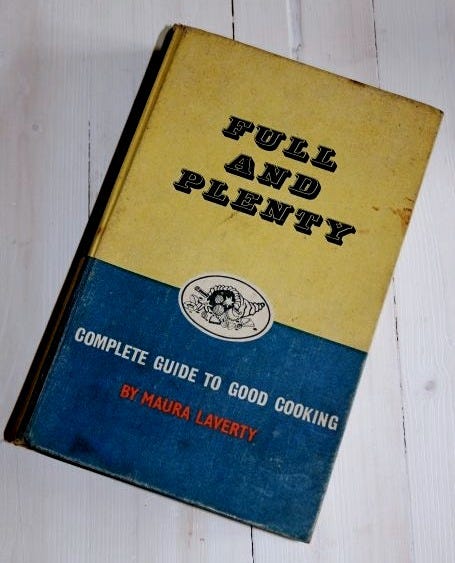Seldom seen nowadays, rock buns (or cakes) are a small, rugged-looking baked good that resemble a rough, craggy rock (hence the name). They were especially popular in the Ireland during the early to mid-20th century due to the simplicity of production and low cost in terms of ingredients.
Rock buns were widespread during WWII and post-war rationing in Ireland because they required little sugar, fat, and eggs. They were taught in many Irish secondary schools during Home Economics classes in the 1950s–1980s, making them a nostalgic item for many nowadays.
Through the mid-20th century, they could also be found in cafés, bakeries, and tea rooms, especially in the provincial towns of Ireland. Their appearance in cookbooks, such as Maura Laverty’s Full and Plenty (1960), made them a stalwart of thrifty and nourishing Irish home baking.
Rock buns were commonly made at home and were popular in rural households, especially from the 1930s to the 1970s. They were often baked in homes where ovens were absent and griddles or solid-fuel ranges (like the Aga or Stanley cooker) were used. Many households had their own recipe and often nothing was weighted, simply mixed to form a wet dough, and then baked.
Though mostly made with staple Ireland pantry ingredients, many variations of the ‘standard’ recipe exist. Buttermilk was occasionally used instead of milk, especially in farming households. Depending on availability and postwar rationing. margarine was used instead of butter. Between the 1940s and the 1970s, Stork Margarine Cookbooks were distributed widely through grocers in Ireland, encouaraing people to switch to margarine.
Though dried fruit was the most common, when unavailable, people often used leftover jam (mixed into the dough). Interestingly, grated apple or stewed rhubarb was added some regional versions (particularly in Galway, Clare, and Kerry). Mixed spice and nutmeg were traditional in some Irish households, as well as a good dash of strong tea for flavour and moisture. In the 1970s, vanilla essence was added, as by then it had become a common Irish pantry staple.
As well as featuring in Laverty’s Full and Plenty, rock buns appear in many other Irish cookbooks from the mid 20th century onwards. All in the Cooking (1946) was the official Home Economics school textbook for decades in Ireland. Though first published in 1946, it was still widely used in the 1980s.
Bord Bia also published recipe booklets between the 1960s and the 1980s. These small pamphlets were distributed across Ireland to promote local produce and home baking. Lastly, the Irish Countrywomen’s Association (ICA) cookbooks (various editions from the 1960s onward) included numerous versions of family bakes, with rock buns as a frequent entry.
The day of the rock bun seems to have passed, though this is not to say a revival is never far away. With the current popularity of soda bread and scones, perhaps some budding Irish baker is ready to release a collection of the best of Irish Rock Buns.
Below is my recipe which I hope to include in my next book on Irish baking. Let me know if you make it, or if you have your own rock bun story.
Jp
19th May, 2025.
Rock Buns
Ingredients
225g plain flour, sieved
1tsp bread soda
1tsp mixed spice
125g butter
75g sugar, and a little extra, for sprinkling on top
100g mixed dried fruit
1 egg, beaten
50ml buttermilk or cold tea
Method
Preheat oven to 190°C.
Rub butter into flour, bread soda, and spice until crumbly.
Stir in sugar and fruit.
Add egg and just enough buttermilk or tea to bring the mix together.
Drop 12 mounds of the batter onto a tray lined with greaseproof paper or a silicone matt. Sprinkle the buns with
Bake for 10-15 minutes until golden and firm. Leave to cool for 5 minutes before transferring to a wire rack.








Baking soda
That brings back food memories of the first thing I ever made in 1st year home economics. It was Deirdre Maddens All about Home Economics....sponsored by stork! Still have it...